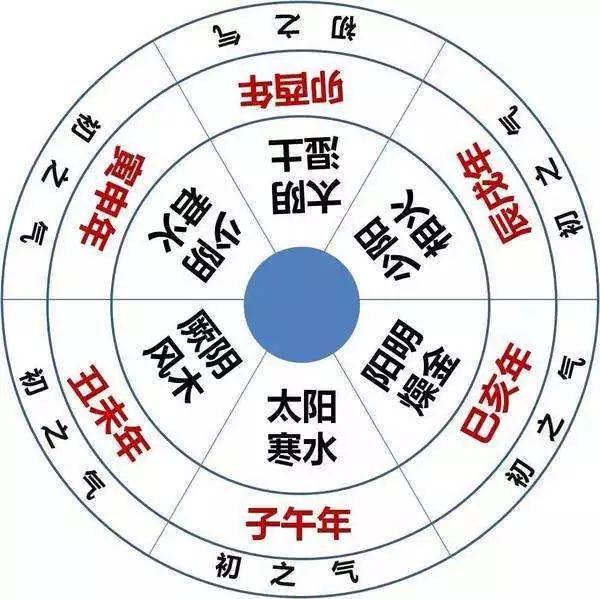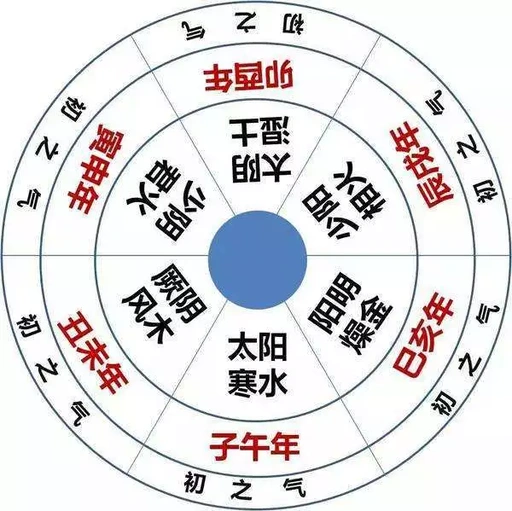Introduction: The “Six Excesses” refer to the six types of climate in nature: wind, cold, heat, dampness, dryness, and fire, which can be excessive or insufficient. When these climatic factors occur out of season or when the body’s resistance decreases and cannot adapt to these changes, they become pathogenic evils. This concept differs from that of the “Six Qi”.
Basic Concept of Six Excesses
1
Six Qi and Six Excesses
Six Qi: The so-called Six Qi, also known as the Six Origins, refers to wind, cold, heat, dampness, dryness, and fire, which are the six normal climatic conditions in nature. The changes in Six Qi are referred to as the Six Transformations. These normal climatic changes are the conditions for the growth of all things and are harmless to the human body. Due to the body’s self-regulatory mechanisms during life activities, it develops a certain adaptability, allowing the body’s physiological activities to align with the changes in Six Qi. Therefore, normal Six Qi generally does not easily cause illness.

Six Excesses: The so-called Six Excesses refer towind, cold, heat, dampness, dryness, and fire, which are collectively known as external pathogenic factors. The shifts in yin and yang, the alternation of cold and heat, and climatic changes all follow certain rules and limits. If climatic changes are abnormal, leading to excessive or insufficient Six Qi, or if climatic factors occur out of season (such as cold in spring when it should be warm, or heat in winter when it should be cool), or if climatic changes are too abrupt (such as sudden cold or warmth), exceeding certain limits, the body may not be able to adapt, resulting in the onset of disease.
When Six Qi transforms from being harmless to harmful to the body, it becomes a pathogenic factor. The Six Qi that can lead to disease is referred to as “Six Excesses”. While climatic changes and the occurrence of diseases are closely related, not everyone will become ill due to abnormal climatic changes. Some individuals can adapt to these changes without falling ill, while others cannot adapt and thus become ill. For the former, the same abnormal climatic change is considered a Six Excess. Conversely, when climatic changes are normal, even in favorable conditions, some individuals may still fall ill due to low adaptability. For these patients, the normal changes in Six Qi become “Six Excesses”.
Thus, it is evident that Six Excesses exist objectively in both abnormal and normal climatic conditions. The determining factors here are the differences in individual constitution and the strength of righteous qi. Only when the body’s righteous qi is insufficient and resistance decreases can Six Qi become pathogenic factors that invade the body and cause illness. In this sense, Six Excesses are a category of pathogenic factors that disrupt the relative dynamic balance of the body due to changes in Six Qi, which can lead to external pathogenic diseases. “Six Excesses” is also known as “Six Evils“.

2
External Six Excesses and Internal Five Evils
External Six Excesses are pathogenic factors of external diseases, referred to as external evils, while Internal Five Evils refer to pathological changes caused by the imbalance of yin, yang, qi, and blood in the organs, which include internal wind, internal cold, internal dampness, internal dryness, and internal heat (fire), belonging to the category of pathophysiology. Although the clinical manifestations of Internal Five Evils are similar to the pathogenic characteristics and pathological responses of wind, cold, dampness, dryness, and fire, they are distinguished from external wind, external cold, external dampness, external dryness, and external heat (fire) by the prefix “internal”, hence referred to as “Internal Five Evils“. The clinical manifestations of Internal Five Evils generally do not present with exterior symptoms, often showing either deficiency or excess patterns, or a mixture of both. When external Six Excesses act on the body, they cause dysfunction in the yin, yang, qi, and blood of the organs, leading to pathological changes that often present with exterior symptoms and are mostly excess patterns. Pure summer heat evil generally does not show exterior symptoms but often combines with damp evil, referred to as summer dampness, which does present with exterior symptoms. Only when external evils penetrate directly can interior symptoms be observed.
External Six Excesses and Internal Five Evils are one as pathogenic factors and the other as pathological results, though they are distinct, they are closely related. When Six Excesses harm the body, they affect the organs, making it easy to cause the harm of Internal Five Evils. Conversely, when the functions of the organs are disordered due to Internal Five Evils, it becomes easier to be affected by the evils of Six Excesses.
Copyright Statement: This article is sourced from the Medical Education Network. Respect knowledge and labor, please retain copyright information when reprinting. The copyright of the content published on this WeChat account belongs to the relevant rights holders. If there are any improper uses, please feel free to contact us for negotiation.

Phone:010-58562900
Customer Service QQ: 2796720975
WeChat ID: ezhensuoVIP
Public Account
ezhensuo
eClinic is an information management system aimed at individual clinics, health centers, and small outpatient services. This system is based on electronic prescriptions, electronic medical records, financial management, and intelligent diagnostic assistance modules, providing professional tools for grassroots doctors to summarize clinical experience, improve diagnostic efficiency, mitigate medical risks, and enhance diagnostic levels.
Click the button below to “Read the Original” for free registration.

